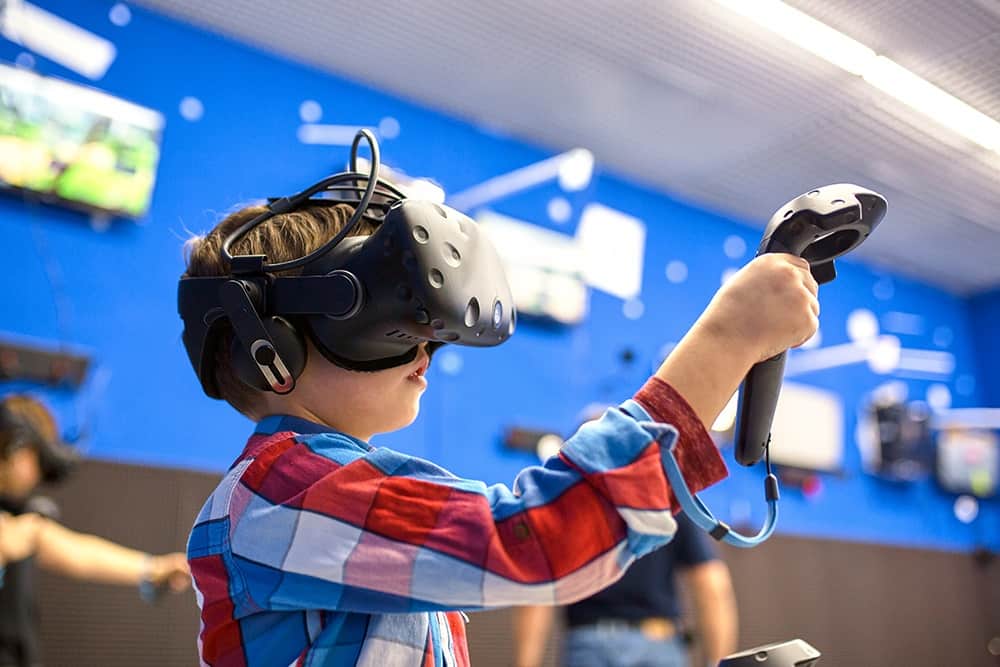VR Therapy in Children: Its Potential to Transform Experiences
Maybe virtual reality therapy in children with different health conditions is right now untraditional. However, its gamification component and capability to help children escape into imaginary worlds before surgical procedures or during physical therapies make virtual reality the promising treatment, and that probably it will be the -near- future of medicine.In other posts, we have spoken about the advantages of virtual reality and children’s mental health during the pandemic. However, this is the first to join the two prior topics and explore the potential of virtual reality therapy among children. This does not solely comprise kids’ mental health; it also extends to children with different health conditions, such as chronic pain and motor impairment. Virtual reality coupled with video game elements, although untraditional, may provide an alternative line of therapy that is more enjoyable, effective nonetheless and transformative in children care.
VR therapy may reduce levels of anxiety and stress
For many children, the mere sight of a needle is enough to instill fear and stress. Surgery, anesthesia and other medical procedures only multiply the problem. However, as one team at Lucile Packard Children’s Hospital Stanford has demonstrated, the use of virtual reality can offer the capacity to engage children in a way that draws their attention away from such worries and makes the clinical experience less apprehensive. 
VR therapy may reduce acute or chronic pain
The case of Blaine Baxter does not only highlight how VR therapy may foster more enjoyable clinical experiences for children. It further underpins how VR therapy may address issues of acute or chronic pain. In a study by Jeff et al., investigators reported that the use of virtual reality helped to modulate the experience of pain. To illustrate, 30 adolescents were randomized to standard care, watching a movie, and VR engagement with the “SnowWorld” virtual environment. These individuals, like Blaine Baxter, had to undergo painful dressing changes for burn wounds. Those in the VR treatment group indicated a reduction in pain when compared to the other two groups. The use of virtual reality at an early age showed potential in alleviating pain.
VR therapy may improve motor skills
The thought of children stirs up images of Mark Twain’s Huckleberry Finn, with his keen desire to play, explore, and climb trees of questionable heights. Children, by nature, burst with energy to engage with new surroundings. It could be running or swimming, or any other physical activity. However, when children are stricken with a health condition that results in motor impairment, it can be detrimental to both the body and mind. Virtual reality therapy, however, may offset these negative circumstances.For example, 9-year-old Tessa suffers from complex regional pain syndrome (CRPS). CRPS is a chronic pain condition that arises primarily in one limb after damage to, or malfunction of the peripheral and central nervous systems. In this video, Tessa can be seen undergoing a more unorthodox occupational and physical therapy approach. Playing a virtual reality video game, Tessa moves her afflicted leg to smash virtual pumpkins. Her movements across different spatial planes strengthen leg muscles; her laughter is redolent of child’s play and joy.—In June 2020 the US Food and Drug Administration allowed the first game-based digital therapeutic device to be marketed for children suffering from ADHD. This action reveals that virtual reality therapy shows great promise.If you are curious about learning how other mental health professionals have taken advantage of Psious’s virtual reality tool for therapy, click here!
Other articles that might interest you:
- How to treat eating disorders with virtual reality
- A child’s mental health during and after the COVID-19 pandemic
- The use of virtual reality in ADHD












